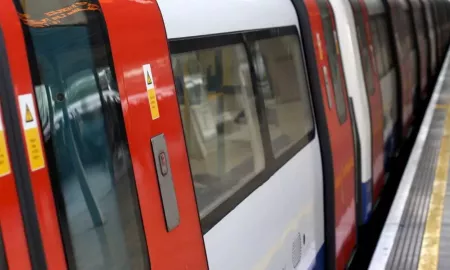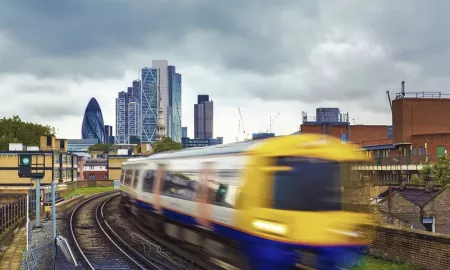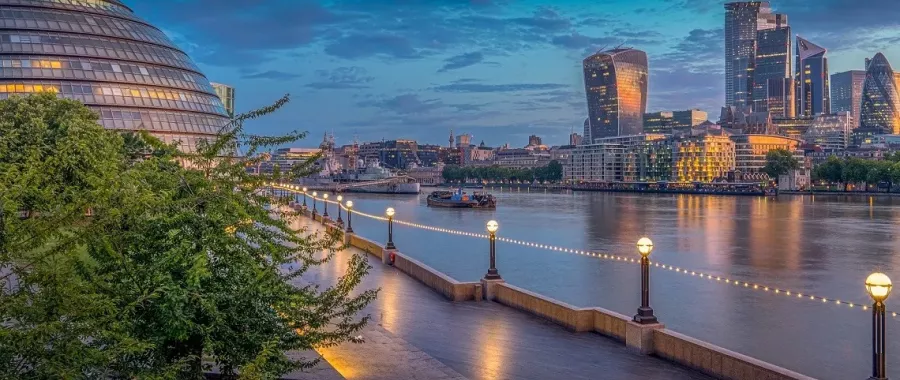The railway can provide habitat to a number of species and there is great opportunity to creating positive biodiversity within this sector.

But rail construction projects, maintenance on a rail depot or trains passing on an active rail line can also have a negative impact on a number of species. To limit this, there are a number of legal requirements in place which can lead to potential prosecution if these requirements are not fulfilled.
Impacts on protected species will either need to be avoided, mitigated, or compensated for. Commonly, a proposed rail development will need an Environmental Statement (ES) in order to comprehensively assess the effects that the development may have on the environment.
In some cases, licensing may be required or works may even be prohibited altogether. Legal and welfare constraints can cause delays for rail projects, but thorough ecological and environmental awareness will help avoid these.
Minimising harm
Ecological assessment commonly assists in the planning and phasing of new rail developments, but normal everyday rail operations can also have significant biodiversity impacts. Activity such as vegetation clearance on track sides or around critical infrastructure, using heavy machinery and chemicals, and the introduction of loud noises and vibrations should be assessed early on in the development.
If a development project could affect a protected species, a survey report is required in order to apply for planning permission - or for a development license to be issued. Badgers, bats, reptiles, birds and great crested newts are just a few examples of protected species which occur on rail property and the legislative framework surrounding them needs to be navigated with care.
Biodiversity assessments typically involve a number of stages to assess whether protected species or habitats could be present. If they’re present, how do they currently use the site and how would they be affected by the proposed works?
To avoid or minimise negative effects on the protected species, licensing and mitigation plans may be needed. Increasingly, biodiversity calculators are being used to measure biodiversity before and after works, basing the impact assessment on more than one individual species so that net biodiversity gains can be achieved - including habitat connectivity and functioning ecosystems.
It is the job of an ecologist to determine which survey and mitigation plan suits the individual project – but having good baseline environmental awareness can significantly improve biodiversity and project outcomes.
Badgers, for example…
If there is evidence that a badger is present around the rail track, or a badger sett is visible, a survey is required to determine if proposed works could affect it. Spring, late autumn and winter are ideal times to survey because badgers are more active during these seasons, and there is less vegetation to disguise their activity. Common indicators of a badger’s presence include sett entrances, badger foot prints or signs of digging.
If the proposed works will affect the sett or the badgers themselves, it will be necessary to apply for a license. An assessment will be required to understand how valuable the sett in question is to the local badger population and determine if the works would damage the sett, the foraging areas or even the badgers themselves.
It is important to map the number and location of each qualifying species – not just badgers. Avoiding harm which necessitates mitigation or compensation may not be fully plausible on a proposed site, but careful ecological assessment and project planning can minimise harm and remove potential delays.
More information and guidance about all protected species and sites can be found on Gov.uk.
Railside vegetation management
Trees that are large in size and considered very leafy (such as poplar, sweet chestnut and sycamore) are the trickiest for the rail. Overhanging or overgrown trees or plants can obscure the view of signals or rail traffic lights. Fallen leaves from nearby trees create slippery surfaces that reduce the grip on the rail line, causing delays and risk to safety.
Similarly, vegetation around critical infrastructure such as sub-stations may need to be removed before routine maintenance or renovation work can commence. Early and effective management of rail property from an ecological perspective can identify potential ecological constraints well ahead of development or routine maintenance work and thus remove the potential for delay.
Identifying invasive or non-invasive plant species is also an important role of the ecologist, which requires expertise or training to understand a plants’ natural habitat, environmental factors that can increase their growth and the warning signs to look out for. Using a professional ecologist, who can consider all areas, ensures best practice and guidance is being met.
Biodiversity opportunity
The rail network is formed by a series of land parcels, many of which do not need stringent or frequent maintenance, making them valuable to wildlife as a result. Trackside corridors link these land parcels, providing valuable wildlife habitats themselves, while collectively forming a large area that has great potential for wildlife. Working alongside nature to facilitate the development of ecological habitat on rail land can be effective in linking isolated habitats and species populations, and therefore meeting biodiversity objectives, and requires minimal cost.
Green spaces are beneficial to human health, with the presence of protected species and habitats also creating a sustainable environment. With environmental awareness and sustainability at the forefront of today’s society, consideration around such topics are key to protecting wildlife, their habitats and the environment alongside the bigger picture drive to achieve industrial and infrastructural growth.
Want to find out more about environmental monitoring?

You might also like







Add new comment